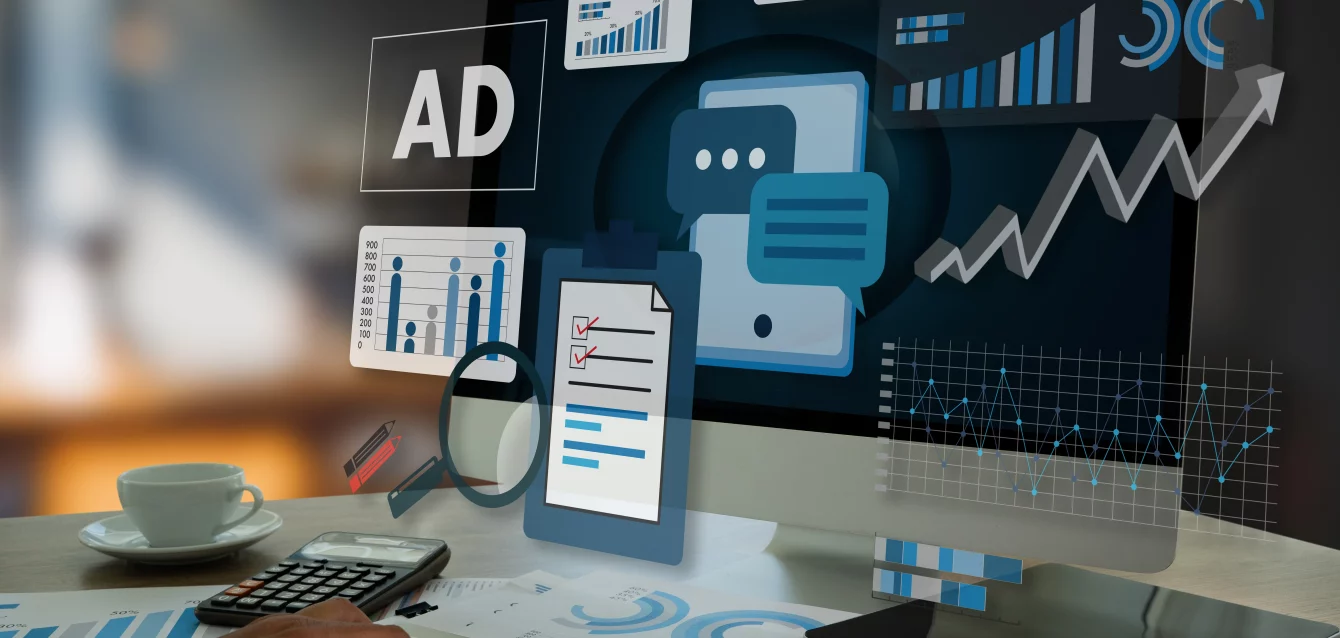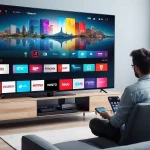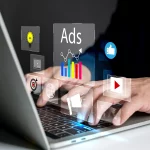What exactly is Programmatic Advertising? The Real Person’s Guide to This Game Changer
Having been in digital marketing for over ten years, we can truly say that programmatic advertising has been the biggest single game-changer we have witnessed. Let’s break it down for you in plain English.
Starting with a Story Envision the scenario: It’s 2015, and we are in a conference room with a room full of people who are spending time haggling over prices for ad placements and negotiating ad placement selection like it was 1999. We would sit for hours arguing that the rate is not appropriate for this position on the page or demographic. Fast forward to today, campaigning for left-handed coffee lovers in Portland who recently searched for sustainable travel options would take less time than as much as making that morning coffee.
That is how powerful programmatic advertising is, and to be very honest, there are times when we still can’t get over that.
Since the early days, DESSY (digitaleast.mobi) has ridden this wave. As a Demand Side Platform, we have witnessed businesses turn their entire marketing around, and we are excited to share a few of our learnings with you.
So, what exactly is programmatic advertising?
Alright, let’s try to put it in simpler terms: Usually, an auction specifies antique furniture while a programmatic ad auction implies bidding for that perfect moment to flash an ad for an ideal customer-the whole auction should last in time less than it takes for one to blink.
It is an ad-buying process that is automated by robots, in other words. This mechanism uses artificial intelligence to buy digital ad space at an automatic speed to show ads to the target audience with scary precision. Gone are those old days of ‘spray-and-pray’ advertising; this is precise and surgical marketing.
This is the thing that excites us about the technology: that it eliminates so much uncertainty that kept us up at night back over the years in advertising. Remember when we would launch a campaign, and we would just wish for the best? Gone are those days.
The Characters of This Digital Drama
Think of programmatic advertising as a highly structured ecosystem with everyone playing their part:
Demand Side Platforms (DSPs) like DESSY are the places advertisers hang out. We are your command centre, your mission control.
Supply Side Platforms come to a publisher’s inventory manager. They are like digital realtors for a publisher.
We call Ad Exchanges one bustling market where all the magic happens- like eBay, but for selling ad space.
Data Management Platforms are the geeky systems that gather and manage audience information.
RTB is the auction that takes place, and believe us, it’s much faster than any auctioneer you’ve ever seen.
The Split-Second Symphony: How Programmatic Ads Actually Work
Now this is where things get really cool. Each time somebody clicks through to a website, a mindless, orchestrated chaos rolls around in the background. We affectionately refer to this as “the 100-millisecond miracle.”
You click on a site, maybe a little excuse to check in on the weather report or read through headlines. In that very instant:
The website will be sending out a signal: “Hey, got prime ad real estate available here, and here’s who’s looking at it.”
DSPs like DESSY instantly analyse the opportunity. Is this person in our target demographic? Are they likely to care about our client’s product? What’s our budget? What time is it? What kind of device are they using?
Many advertisers start bidding at once. It’s like a lightning-fast silent auction where the bids are shouted in binary.
The highest bidder wins, and their ad is showcased on your screen right before the page loads.
We’ve witnessed this occur thousands of times, and it still feels magical. The fact that this intricate dance takes place every single time someone visits a website. It’s mind-boggling.
Why This Matters for Real Businesses
Let us tell you about Sarah, who runs a very small sustainable fashion brand. Before programmatic, Sarah was probably spending $5,000 a month on Facebook ads just hoping for some sort of… well… result. Her conversions ran about 1.2% – not horrible, but could be much better.
When Sarah gave programmatic ads a try via our platform, she could suddenly target people who had recently searched for ethical clothing, lived within 50 miles of her flagship store, had household incomes above $75k, and had heard about and engaged with similar brands online. Her conversion rate shot up almost overnight to 4.8%.
That, really, is power in programmatic: not efficiency, but relevance
The Different Flavors of Programmatic
The purpose of programmatic advertising is to bring attention to the array of types:
Real Time Bidding (RTB)
This is the wild west of programmatic: the open marketplace in which anyone can bid on anything. Due to larger-scale potential and bargain pricing, this channel is favourable if you know what you are doing.
Private Marketplaces (PMPs)
Consider this the VIP section of programmatic advertising. Publishers invite selected advertisers to bid on premium inventory. It is pricier than RTB but generally worth the price.
Preferred Deals
Consider this your restaurant’s stand-by table: the price is pre-negotiated, though the deal still enjoys the automation benefits.
Programmatic Direct
The closest you will get to traditional media-buying with a programmatic efficiency: guaranteed inventory at fixed prices, perfect for brands needing assurance.
From my experience, most successful campaigns will require some mix of the above options. It’s not about picking one; rather, it is about knowing when to use each.
Reasons we Really Excited About Programmatic and You Should Be Too Super Awesome Targeting Abilities
Back when “targeting” was supposed to mean picking between males and females in the age category of 25-54, we knew those times. But now? Targeting is based upon actual human behaviour, interest, or purchase intention.
One of our clients sells expensive kitchen equipment. Instead of targeting “homeowners interested in cooking,” we now target “people who have spent roughly 30 minutes reading about sous-vide cooking techniques, have visited websites of premium appliances, and reside in homes valued above $500k.” The difference in response rate is enormous.
Real-Time Optimization is a Beautiful Matter
What keeps us passionate about this business is that programmatic ads learn and evolve by themselves in real time. If our AI notices that ads deliver better performance on mobile devices from 7:00 to 9:00 PM on weekdays, it will automatically shift the budget and the targeting to make use of that insight.
No more waiting for that monthly report to adjust; it’s adjusting itself, which means our clients’ money is working harder every day.
ROI Numbers Don’t Lie
Let’s be perfectly honest- we have seen average improvements of 40 to 60% in ROAS (Return on Ad Spend) when clients move away from conventional digital advertising to programmatic. That’s not a typo.
One manufacturing client was spending $50,000 a month with a 2:1 ROAS, now spending $30,000 a month with a 5.2:1 ROAS. So, they’re actually reaching better prospects, spending less money, and getting far better results.
What’s Really Working
From a programmatic advertising perspective, the analytics kind of give us chills. You get to know exactly which audiences convert best, which creative variations work better, at the time of the day when conversions peak… and millions of other parameters.
It’s like having an X-ray of your marketing performance.
A Reality Check: The Actual Challenges Are There
We’d be doing a huge disservice if we pretend programmatic is a perfect kind of thing. These are the actual challenges we help our clients navigate:
Ad Fraud Is Real (But Controllable)
Some bad actors set up their fraud factories and, through a bazillion fake websites and bot traffic, attempt to steal advertising dollars. Frustrating, certainly; that said, working with platform houses such as DESSY that invest heavily in fraud detection keeps it all in check. Suspicious activity incidents are captured and blocked well before they can impact our clients’ campaigns.
Brand Safety Gives Me Constant Training
Would anybody want an ad for a luxury watch next to conspiracy theories or, much worse, inappropriate content? Therefore, all our efforts go into setting content filters and placement monitoring. It requires vigilance, but is a task worth accomplishing.
Privacy Regulations Keep Changing
With the enactment of the GDPR, CCPA, and a flurry of other privacy regulations, the legal team is kept on its toes. On the bright side, ethical programmatic advertising platforms do take these on well. We are, hopefully, past the days when creeps could track you about.
Attribution Is Getting Messed Up
Is it when a display ad is seen on Monday, when clicks through a social ad on Wednesday, or when converts through Google search on Friday that any channel should be given credit? It’s complicated, but the multi-touch attribution models do help us realize the bigger and clearer picture.
My Best Advice for Programmatic Success
After years of campaign management, here’s what we’ve found that really works:
Start with Crystal-Clear Goals
We have lost count of clients coming to us with such vague requests as “increase brand awareness”. That’s like saying, “make more money” – true, but unhelpful.
Is it that you’re driving website traffic? Generating leads? Encouraging app downloads? Increasing in-store visits? The more specific, the better, because it allows us to optimize your campaigns accordingly.
Data is Your Gold–Treat it that way
Any relevant data about your own customers and visitors is very powerful in programmatic. If you fail to collect and organize data on your customers, you are in effect throwing money away.
One restaurant chain client doubled their programmatic performance by creating lookalike audiences based on their loyalty program members.
Testing Never Ends
We never get sick of A/B testing various creative treatments, audience segments, and bidding strategies. What may have worked last month may very well not be working this very moment. Consumer behaviour changes: markets also change. Therefore, the companies with the best campaigns are the ones that constantly change.
Don’t Cheap Out with Creative
We have seen very brilliant targeting strategies going for a toss because of boring creative. Your ad must grab attention and communicate value in a moment. In programmatic, sometimes it is actually a matter of milliseconds between the time an ad goes on a screen to when it makes an impression on a user.
Invest in high-quality and relevant ad content that talks directly to the needs and wants of your audience.
What the Future Holds: Things are Looking Bright
We are genuinely excited about where programmatic advertising is going to:
AI is getting cleverer by the day. We are passing through the simple optimization into predictive targeting, able to predict customer behaviour before it happens.
Connected TV is bursting at its seams. Programmatic video advertising has grown so much inside streaming platforms. Imagine the precision of digital targeting fused perfectly with the might of television advertising.
Privacy-first solutions are coming up. We now seek to develop the most sophisticated first-party data strategies and contextual targeting schemes that honour user privacy, instead of the third-party cookie.
Voice and audio advertising are taking off. Programmatic purchasing for podcast and smart speaker advertising is opening entirely new opportunities.
Real Questions from Real Clients
“Isn’t programmatic advertising just for big companies?”
No! Many of our campaigns produce extraordinary results for small and medium businesses. The beauty of programmatic is that it works with any budget. Whether you spend $1,000 or $100,000 per month, you have access to the same sophisticated targeting and optimization techniques.
“How much should we expect to spend?”
This, of course, depends on your arena of commercial activity, the actual audience that is targeted, and the goals your campaign tries to achieve. Adequate campaigns can be done for as low as $500 per month locally, going all the way up to $500,000 monthly for national brands. The true remedy is to start with very clear objectives, then scale according to what passes first.
“Will my current marketing efforts become obsolete with programmatic advertising?”
Programmatic advertising will complement your existing marketing
efforts, never replace them. Generally, we recommend it as your primary
vehicle for digital advertising, with organic social media, content
marketing, email campaigns, and other tactics working alongside it.
“How much time will it take to see results?”
Programmatic is, of course, in total contrast to SEO or content marketing, in that it can offer immediate results. We generally let clients know to expect some meaningful data to hit them within 7 days and important insights for optimization in 30 days. The beauty is that you can keep adjusting and improving.
“And what if my target audience is not much online?”
It’s a good question, and unless your target audience is made up entirely of off-grid types, they’re probably online more than you think. The average person spends more than 7 hours per day with digital media. So, the question is not whether they are online but whether you are effectively reaching them when they are.
Working with DESSY: Why We’re Different
Look, we could fill this entire blog with sales pitches, but we’d rather be honest with you about what makes DESSY special.
First, we really care about your success. We know that sounds like another classic marketing line. Here’s the thing: our business model is built on the performance of your campaigns. If you don’t see ROI, you stop working with us. Hence, we are highly motivated to ensure your programmatic advertising drives the real results.
Secondly, our core value is transparency. You won’t notice any delays in the data as you will be able to see your campaign’s performance instantly; moreover, we will provide full details for every activity that we have planned and its rationale.
Thirdly, we have made significant investments towards brand safety and fraud mitigation. We ensure that your advertisements are placed in suitable environments and that your advance funds are not used to pay for fraudulent advertisements.
To understand our approach to digital marketing, we invite you to visit us at digitaleast.mobi.
The Bottom Line
The use of programmatic advertising is not a new concept, and neither is its implementation to work alongside effective digital marketing. The concept of reaching and targeting the audience of one (the right customer) with the appropriate message and continuous improvement of the marketing automation is something to be admired.
Everything that we want to let you know is programmatic advertising does not work like a wizard, it is a useful technology, but to make it a success, you need the right programmatic strategy and continuous focus on the small details, and the right collaboration makes a huge impact.
Are you still using digital advertising methods like buying placements one by one, hoping your demographic targeting is on point, and waiting ages to find out if your campaigns perform? Not only are you neglecting a plethora of opportunities, but you are also placing yourself at a marked disadvantage in comparison to your competitors who use programmatic.
It’s not whether programmatic is appropriate for your business. It’s whether your competitors will be allowed to get a head start while you continue to ignore it.
Want to schedule a meeting so we can guide your business to the benefits of programmatic advertisements? Get in touch with our team at digitaleast.mobi. Let’s make sure your business gets the best return on investment.




